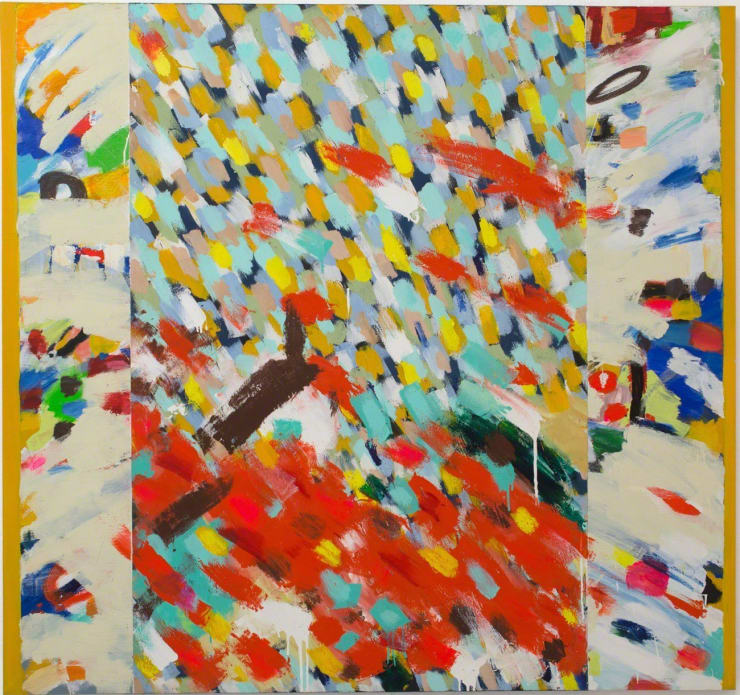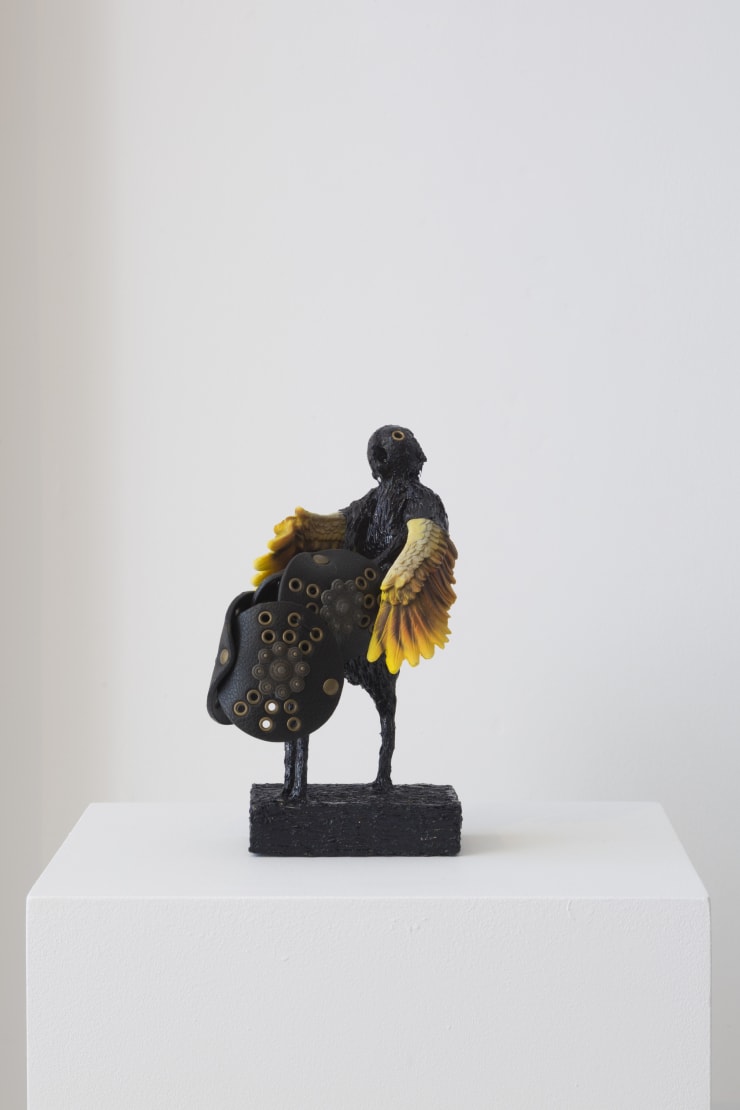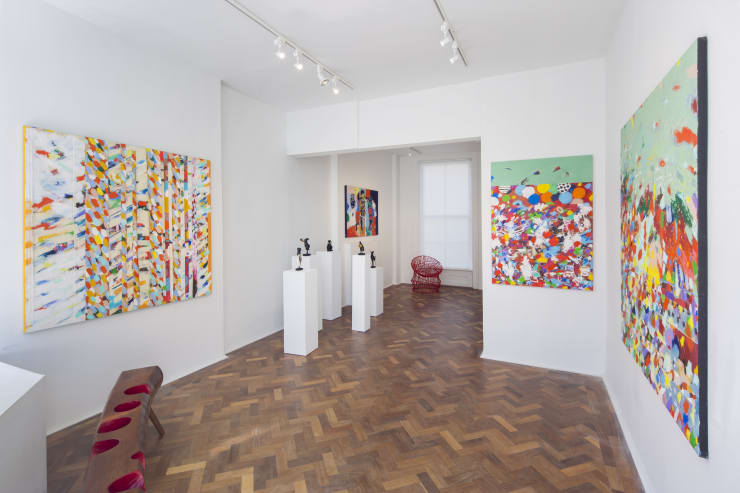Migrations
Past exhibition
Œuvres
Vues de l'exposition
Communiqué de presse
The paintings - all oils on canvas - consist of a collage of two or more either vertical or horizontal panels making what Bâ calls: “uni-polyptychs”. Motifs like balloons, or sudden streaks of bright colours are scattered on the panels around which scribblings, a motif of a popping eye or a swiftly sketched muzzle of an animal are introduced - raising questions. The whole canvas suggests a sense of swirling dynamics that is interrupted by the presence of the collaged panels, but not altogether stopped.
It is difficult to look at Cheikhou Bâ's new artworks without thinking of the recent social and political tensions that have arisen worldwide in response to the refugee crisis. The use of chains in some of the sculptures and the titling of some of the paintings, for example “Ma tete, ma maison”, more overtly critique the growing world-wide temptation to close borders.
As usual in Bâ’s work, a unique tone transpires from these works expressing both a feeling of deep empathy and uncanny. It can be argued that Bâ’s use of hybrid figures are part references to the ‘Ontology of Negritude’ a concept introduced by Leopold Senghor, the poet and intellectual who became Senegal’s first President in which to be human is also to be animal and to be matter all at once; to be both male and female; and to be in constant motion between these moving states. The twirling sensation generated by the composition of the canvas seems to inform that physical migrations mirror some fundamental moving urge for human beings. Migrations appear here as a primal phenomenon that concerns man, animal, nature and all things together, and that it is as unavoidable as the movement of the earth itself.
At the same time Bâ, in not differentiating human, animal and matter, also plays with what is defined by Julia Kristeva as ‘the Abject’, generating unease for the viewer in both sculptures and paintings. In ‘The Myth of Independence’ the character is restricted by heavy chains, taken from cheap imported objects, parts of belts or jewellery - that nowadays fill West African markets. Human is no longer free animal and earth matter, but a tragic enslaved commodity. In the canvas, the tension between the use of bright colours some of them taken from the realm of childhood such as hot pinks and baby blues, and the motifs of isolated parts of man or animal heads, contributes to underline disquieting questions.








